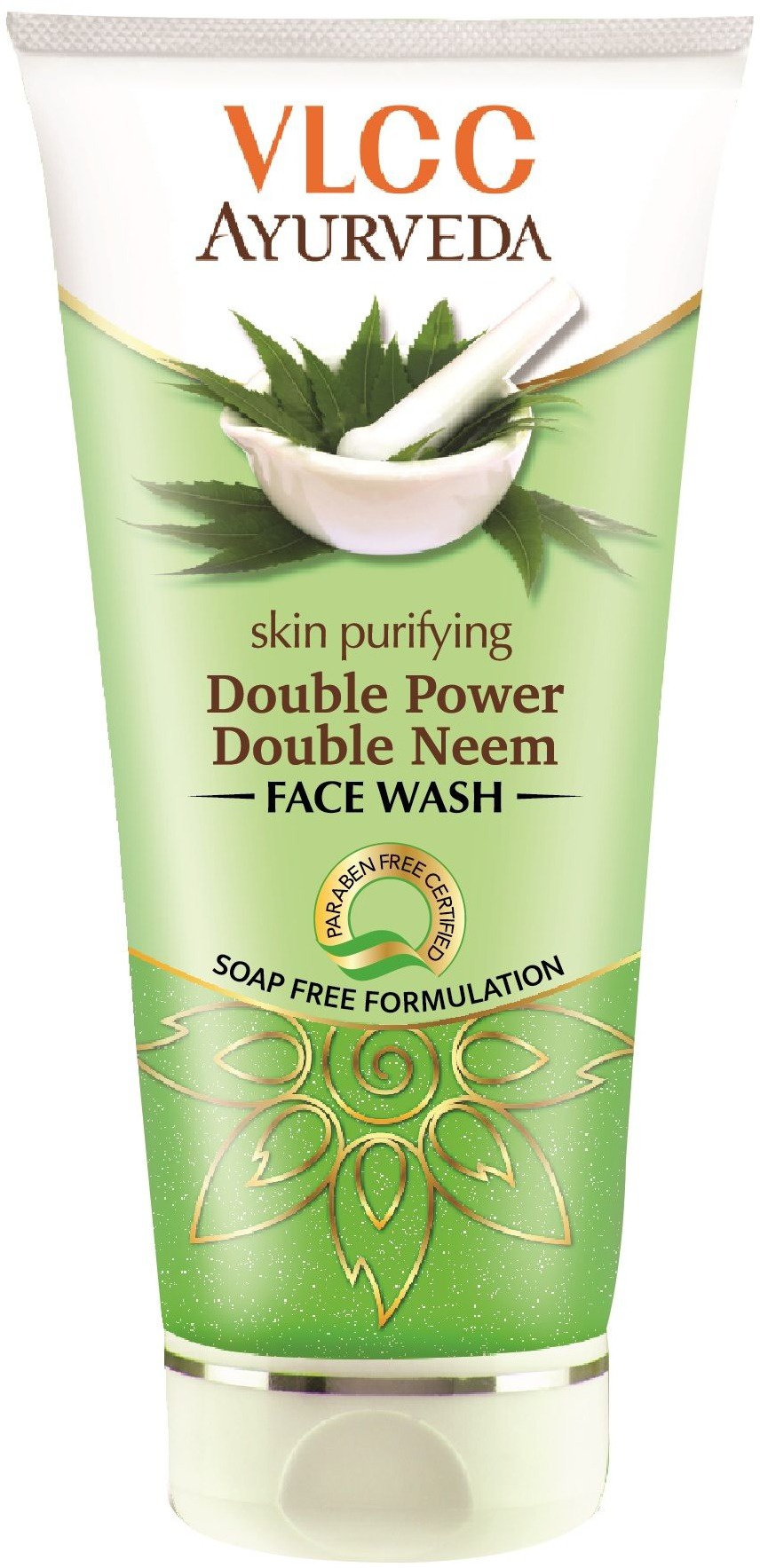
Ayurveda Skin Purifying Double Power Double Neem Face Wash
Ingredients overview
Highlights
Skim through
VLCC Ayurveda Skin Purifying Double Power Double Neem Face WashIngredients explained


The essential oil created by steam distilling the leaves of the Eucalyptus tree. It's a colorless, pale yellow oil with a camphoraceous aroma used traditionally in vapor rubs to treat coughs. Its name-giving main component is eucalyptol (also called 1,8-cineole, 80-91%) that has significant antibacterial and expectorant properties.
Among essential oils, Eucalyptus Globulus counts as rather non-sensitising with an EU sensitizer total of 5% (due to limonene). However, if your skin is super-sensitive or you are allergic to fragrances, it is still better to avoid it.

Sapindus Mukorossi is a nice, big tree living in tropical and sub-tropical regions of Asia. Its fruit is commonly called soapberry or washnut - telltale names for its traditional use as a cleansing agent. It contains natural surfactants called saponins (10-11.5%) and forms a nice rich lather. It's great at cleansing the skin of oily secretion as well as washing the hair.
Apart from being a cleansing agent, Sapindus Mukorossi also has a bunch of other pharmacological effects: It's well-known for its insecticidal properties and is traditionally used for removing lice from the scalp. As for other skin-care relevant things, it has promising tyrosinase inhibition, free radical scavenging (antioxidant), antimicrobial and anticancer activity.

This ingredient name is not according to the INCI-standard. :( What, why?!
It’s pretty much the current IT-preservative. It’s safe and gentle, but even more importantly, it’s not a feared-by-everyone-mostly-without-scientific-reason paraben.
It’s not something new: it was introduced around 1950 and today it can be used up to 1% worldwide. It can be found in nature - in green tea - but the version used in cosmetics is synthetic.
Other than having a good safety profile and being quite gentle to the skin it has some other advantages too. It can be used in many types of formulations as it has great thermal stability (can be heated up to 85°C) and works on a wide range of pH levels (ph 3-10).
It’s often used together with ethylhexylglycerin as it nicely improves the preservative activity of phenoxyethanol.

You may also want to take a look at...
| what‑it‑does | perfuming | antimicrobial/antibacterial |
| what‑it‑does | perfuming |
| what‑it‑does | surfactant/cleansing |
| what‑it‑does | perfuming |
| what‑it‑does | preservative |
| what‑it‑does | perfuming | viscosity controlling |





